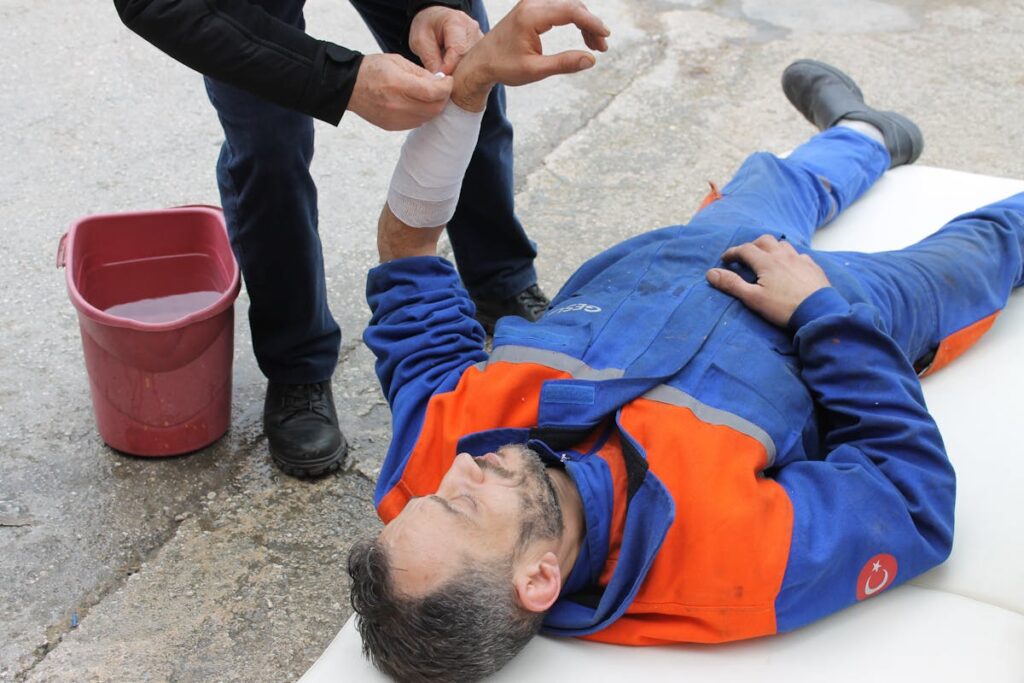Mechanical failures can lead to complex legal ramifications, often revolving around liability and negligence. Identifying responsible parties necessitates a meticulous investigation into maintenance practices, design flaws, or manufacturing defects. Compliance with regulations and adherence to contractual obligations are scrutinized. The burden of proof rests with claimants to link negligence to the failure. Expert testimony and detailed documentation become essential in resolving these disputes. Understanding these elements is vital for maneuvering potential legal challenges.
Understanding Mechanical Failures in Legal Contexts
When examining mechanical failures within legal contexts, it is essential to recognize the intricate interplay between engineering principles and legal standards. Mechanical reliability serves as a cornerstone in determining the dependability of systems, directly influencing legal assessments. In failure analysis, experts meticulously investigate the causes of breakdowns, employing engineering diagnostics to ascertain whether a product met its intended design and operational criteria. The scrutiny of these failures often involves a thorough evaluation of mechanical components and their interactions under various conditions. Legal interpretations hinge on detailed analysis, where the distinction between inherent flaws and unforeseen circumstances is pivotal. Consequently, understanding these failures necessitates a synthesis of technical insight and legal acumen, forming a basis for informed judgments in potential litigation or compliance evaluations.
Liability and Negligence in Mechanical Failures
Determining liability and negligence in mechanical failures demands a precise examination of both legal and mechanical intricacies. Liability assessment hinges on identifying the party responsible for maintenance, design, or manufacturing defects. Negligence standards necessitate establishing a breach of duty, where the responsible party failed to meet the expected level of care, directly causing harm or loss. This analysis requires scrutinizing maintenance records, design specifications, and operational protocols to pinpoint lapses or oversights. In legal terms, the burden of proof lies with the claimant, who must convincingly demonstrate how negligence precipitated the mechanical failure. Ultimately, a robust liability assessment combines expert mechanical evaluations and legal scrutiny to ascertain accountability, ensuring the aggrieved party receives appropriate restitution for damages suffered.
Contractual Obligations and Breaches Due to Equipment Malfunctions
In examining contractual obligations and breaches due to equipment malfunctions, it becomes essential to analyze the terms stipulated within the contract and the specific responsibilities assigned to each party. Contract disputes often arise when one party alleges a breach due to equipment failure. Central to resolving these disputes is determining whether the equipment warranties adequately covered the malfunction. These warranties typically define the scope of liability and the required remedial actions, which can include repair, replacement, or compensation. A precise interpretation of these warranties is vital, as it influences the outcome of legal disputes. When equipment malfunctions, parties must evaluate whether the failure constituted a breach and assess the contractual remedies available, ensuring obligations align with the contract’s intent.
Regulatory Compliance and Mechanical Failures
Regulatory compliance plays a critical role in addressing mechanical failures, as these incidents can have significant legal and operational consequences. Adherence to regulatory frameworks guarantees that organizations are aligned with industry standards, minimizing the risk of mechanical failures and associated liabilities. Compliance audits are instrumental in identifying potential non-compliance areas, allowing for timely corrective actions and enhanced safety measures. These audits scrutinize adherence to regulations and standards, thereby mitigating the risk of failures due to lapses in maintenance or operational procedures. Failure to comply not only exposes organizations to legal repercussions but also jeopardizes operational integrity and public safety. Consequently, a robust compliance strategy is indispensable for sustaining operational efficiency and minimizing the catastrophic impacts of mechanical failures.
Risk Management Strategies for Mechanical Failures
Effective risk management strategies for mechanical failures hinge on three critical components: preventive maintenance planning, incident response protocols, and equipment performance monitoring. Preventive maintenance guarantees that systems are regularly checked and serviced, greatly reducing the likelihood of unexpected breakdowns. By implementing robust incident response protocols and continuous performance monitoring, organizations can swiftly address failures and minimize potential legal liabilities.
Preventive Maintenance Planning
Although mechanical failures can be disruptive and costly, implementing a robust preventive maintenance plan serves as an indispensable risk management strategy to mitigate these issues. Regular preventive audits are vital to identify potential vulnerabilities before they escalate into significant problems. These audits guarantee that maintenance schedules are adhered to, optimizing equipment functionality and extending asset lifespan. Establishing precise maintenance schedules, tailored to the specific needs of machinery, facilitates timely inspections and corrective actions, reducing the likelihood of unexpected breakdowns. Moreover, a well-structured preventive maintenance plan not only minimizes operational disruptions but also safeguards against legal repercussions associated with negligence claims. By prioritizing preventive measures, organizations can effectively mitigate risks, assuring continuity and reliability in their operations while maintaining compliance with industry standards.
Incident Response Protocols
Addressing mechanical failures requires not only preventive measures but also a broad incident response protocol to manage risks efficiently. Implementing a robust incident command system is essential for coordinating swift and effective actions. This structured approach guarantees that all personnel understand their roles, promoting a seamless response to mechanical malfunctions. Response training is pivotal, equipping staff with the necessary skills to mitigate potential hazards promptly. Organizations must prioritize regular drills and simulations, fostering a culture of preparedness. The strategic allocation of resources, guided by a well-defined protocol, minimizes downtime and financial losses. Additionally, thorough documentation of each response effort enhances future strategies, reducing liability risks. An all-encompassing incident response protocol is indispensable for safeguarding operational integrity and legal compliance.

Equipment Performance Monitoring
Monitoring equipment performance forms a critical pillar in the risk management strategies for mechanical failures. By leveraging performance analytics, organizations can proactively identify potential issues before they escalate into significant disruptions. This analytical approach not only enhances operational efficiency but also minimizes costly downtime. Predictive maintenance emerges as an essential component within this framework, utilizing data-driven insights to forecast equipment failures. This methodology allows for timely interventions, reducing the likelihood of unexpected breakdowns. As a result, businesses can allocate resources more effectively and uphold safety standards. Integrating these strategies fosters a robust defense against legal liabilities associated with mechanical failures. Therefore, investing in advanced monitoring systems and predictive tools proves indispensable in safeguarding both operational continuity and regulatory compliance.
Insurance Considerations in Mechanical Failure Incidents
When mechanical failure occurs, understanding the nuances of insurance coverage becomes essential for determining liability and compensation. Insurance policies serve as a fundamental foundation, outlining the scope of coverage, exclusions, and the insured’s responsibilities. It is imperative to meticulously review these policies to ascertain whether a specific mechanical failure is covered. The claim processes necessitate prompt reporting, thorough documentation, and adherence to procedural requirements to facilitate a successful claim. Insurers evaluate claims based on policy terms, the nature of the mechanical failure, and any contributory factors. A well-documented claim can greatly influence the outcome, emphasizing the importance of detailed evidence and compliance with policy stipulations. Maneuvering these intricacies guarantees that stakeholders maximize potential compensation and protect their financial interests.
Case Studies of Legal Consequences From Mechanical Failures
Mechanical failures often serve as catalysts for complex legal battles, as demonstrated in various case studies that highlight the intricate interplay between engineering malfunctions and legal accountability. One notable case example involves the 1981 Hyatt Regency walkway collapse, which resulted in significant loss of life and set a legal precedent for structural engineering liability. This case underscored the necessity of rigorous safety standards and meticulous oversight in construction projects. Another pivotal case example is the Ford Pinto litigation, where design flaws led to catastrophic accidents and subsequent lawsuits, forcing a reevaluation of corporate responsibility and consumer safety expectations. These case examples underscore the critical need for stringent adherence to engineering protocols, as legal precedents continue to shape accountability in the face of mechanical failures.
The Role of Expert Witnesses in Mechanical Failure Litigation
How essential are expert witnesses in the intricate arena of mechanical failure litigation? Their role is undeniably critical. Expert testimony provides the court with specialized knowledge that aids in understanding complex engineering principles. In cases involving mechanical failure, engineering analysis from these experts serves as the cornerstone for interpreting technical details and evaluating the root causes of failure. Their insights can pinpoint design flaws, manufacturing defects, or maintenance oversights, thereby influencing the litigation’s outcome. The credibility of expert witnesses can greatly sway juries and judges, underscoring the necessity for well-qualified individuals. Ultimately, expert testimony bridges the gap between technical complexity and legal decision-making, ensuring that justice is informed by rigorous engineering analysis and objective evaluation of evidence.
Preventive Measures and Best Practices for Avoiding Legal Issues
Although mechanical failures can lead to complex litigation, implementing preventive measures and best practices is essential for minimizing legal risks. Companies should prioritize preventive audits to identify potential mechanical issues before they escalate into major failures. These audits provide a structured approach to evaluating machinery and equipment, ensuring compliance with safety standards and regulations. Additionally, thorough safety training programs for employees are vital. Such training empowers personnel to recognize signs of mechanical deterioration and understand proper maintenance procedures, greatly reducing the likelihood of operational mishaps. By integrating regular preventive audits and rigorous safety training into their operational protocols, organizations can not only enhance workplace safety but also shield themselves from potential legal complications arising from mechanical failures. This proactive strategy is both prudent and legally advantageous.
Frequently Asked Questions
How Can Individuals Protect Themselves From Mechanical Failure Liabilities?
Individuals can protect themselves from liabilities by implementing preventive measures, such as regular maintenance and safety checks, and securing liability waivers. These strategies reduce risk exposure and provide a structured approach to managing potential mechanical failures effectively.
What Are Common Defenses Against Claims of Negligence in Mechanical Failures?
Common defenses include burden shifting, where responsibility shifts to another party, and using expert testimony to demonstrate adherence to industry standards. These approaches persuasively counter negligence claims by highlighting compliance and identifying alternative causation factors.
How Do Mechanical Failures Impact Consumer Rights?
Mechanical failures considerably impact consumer rights by highlighting the importance of consumer protection laws and warranty claims. These mechanisms guarantee that consumers can seek reparations or replacements, thereby maintaining trust and accountability within the marketplace.
Can Mechanical Failures Result in Criminal Charges?
Mechanical failures can lead to criminal charges if criminal negligence is established, where liability issues arise from ignoring safety standards or maintenance. Determining culpability depends on the evidence showing a breach of duty causing harm or risk.
What Steps Should Be Taken Immediately After a Mechanical Failure Incident?
In response to a mechanical failure incident, it is essential to promptly adhere to safety protocols, thoroughly document the incident, assess potential hazards, and initiate corrective measures. This guarantees accountability and aids in preventing future occurrences.

